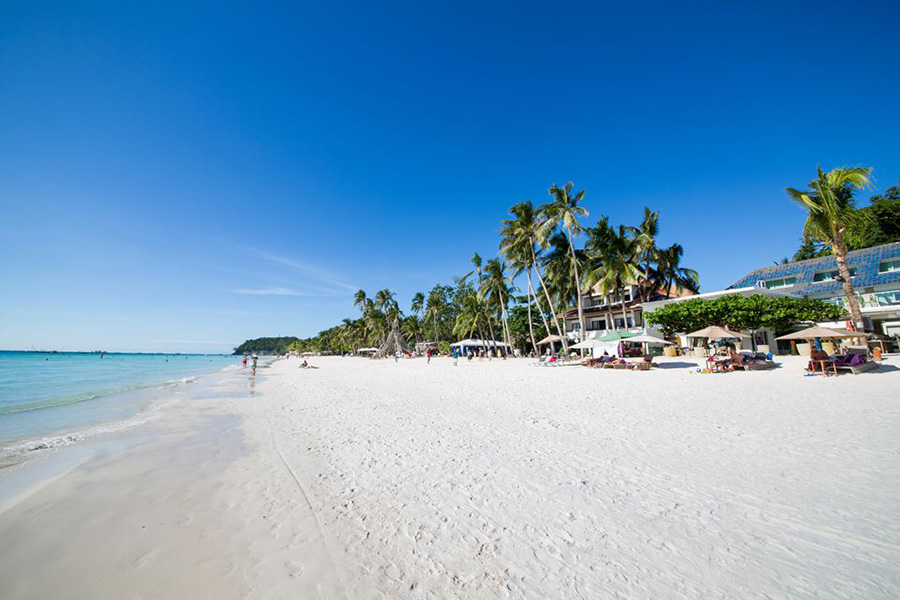It’s no secret that Vietnam is a thriving hub for inspiration hunters, especially in the mountainous areas where the tribal culture is very much alive. There’s no better place to showcase the rich and colorful culture of this fascinating country than ethnic minorities groups. It’s also where the soul of Vietnam’s crafting traditions being kept for ages despite of modern technology and development going on in the outside world. It’s where the ancient techniques are still being used as an honor and traditional costumes are being worn as a part of daily life. If Vietnam is your next destination, it’s highly recommended that you spend some time to touch base with the local hill tribes. Apart from exploring villages in the rugged mountains, let’s go to at least one of the ethnic markets which is as much interesting as any fashion show. Additionally, there are plenty of silk villages and indigo farms to learn about the traditional techniques and cultural highlights of a minority group.
In this post, we’d like to take the first glimpse at the textile pictures of Vietnamese ethnic minorities with the Black Hmong. Our experts spent days with a local family to learn about their textile traditions. We’ve been through an extraordinary journey of the hemp from plants in the field to colorful costumes which symbolize the spiritual life of a community.
A glance at the Black Hmong community
Hidden amongst the emerald hills of Northwest Vietnam, near the Chinese border is the residence of the Black Hmong minority. You can easily find them in such areas like Sapa, Bac Ha, Cao Son, Mu Cang Chai, Lai Chau. This tribe is believed to emigrate from China about 300 years ago and since then, they’ve been building a community to preserve their traditions and heritage.
The Black Hmong minority boasts a unique style of their own. It’s quite recognizable by indigo dyed and refined patterns which symbolize the intimate connection between their people and the nature. Even though it’s a lengthy process to create the traditional clothing, the women of this hill tribe still practice everyday.
Hemp in the Hmong’s life

It’s said that wherever you see hemp, the Hmong people must be around. Indeed, hemp plays a key role in both physical and spiritual life of the Hmong minority. Originated from this sacred plant, the Hmong created a vibrant culture which is unique and unblended with any other. Just like the ethnic groups, this plant is considered very strong and adaptable in harsh weather. A life cycle of hemp is quite short, around 70 days. From the cultivation to harvest and utilization on their clothes, hemp became their life style. The clothes from hemp is not only durable but also highly aesthetic. It’s suitable for the weather condition of the mountainous areas and the agriculture types of work. Above all, it thoroughly represents the cultural identity as long as the pride of the Hmong community.
Another interesting fact is that hemp can be proceeded to be the homemade Hmong’s tobacco. It’s quite often that you see the men sitting in the front of their house and enjoy a homemade smoke from a special kind of hookah.
Making hemp fibers

First hemp is harvested and then being left to dry out for 10 days under the sun, but only 4 nights under the dewfall to strengthen its elasticity and resilience. The women then use their hands to separate the fibers and soften them a little first. Later everything will be put into a millstone to further flatten and make it more flexible and silky. Then being dipped in the bamboo ash water, washed, dried, the same process needs to go on for multiple times until it reaches the ivory color and silky texture. The way they make the joints to lengthen the fibers is quite impressive as well. You totally can’t see any sign of junction. The next step is where hand looms being used to weave those glossy strands into pieces of cloth, ready for decorations.

 Editor team
Editor team September 6, 2019
September 6, 2019 Travel Guide
Travel Guide
 382
382 YOU MAY ALSO LIKE
YOU MAY ALSO LIKE
 read more
read more

